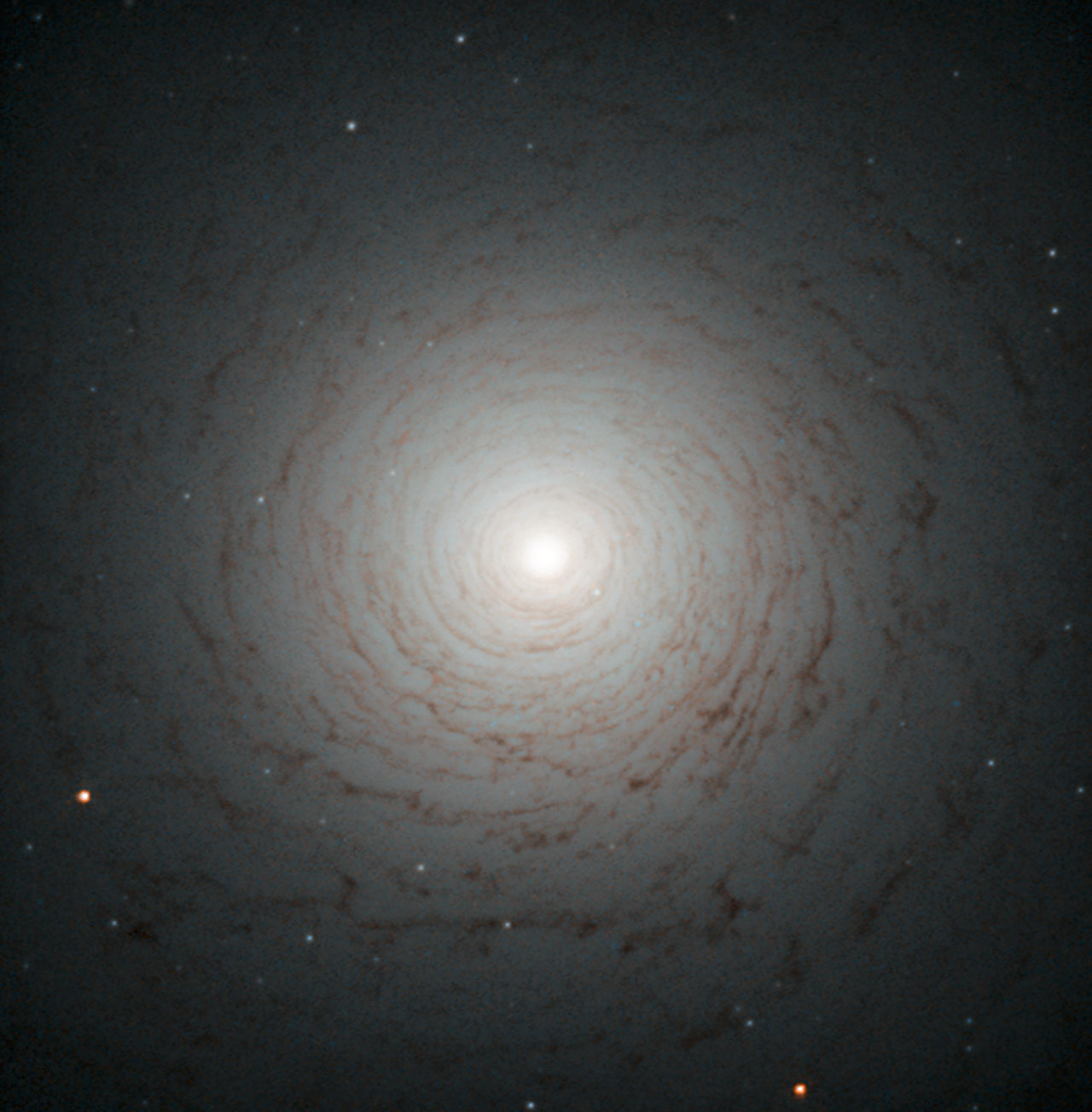Hypnotic Space Spiral Imaged by Hubble Telescope

A mysterious spiral of doom — okay, just a spiral-shaped galaxy — has been captured in a new image by the Hubble Space Telescope.
The object belongs to an uncommon class of galaxy called lenticular galaxies, thought to represent the transitional phase between middle-aged spiral galaxies and old elliptical galaxies. When spiral galaxies are hale and hearty, they are full of gas being transformed into new stars. Eventually, all this gas gets used up or lost to space, and the spiral loses its structure, ultimately ending up as a spherical elliptical galaxy.
Lenticular galaxies are stuck in between these two major phases of galaxy life. This one, called NGC 524, has managed to retain most of its intricate spiral structure, and appears face-on to Earth as an almost perfect whirlpool. By observing the galaxy, researchers determined that it still maintains some of its spiral motion, allowing it to keep its structure.
NGC 524 lies about 90 million light-years from Earth in the constellation Pisces. The new Hubble photo was released July 22.
Follow Clara Moskowitz on Twitter and Google+. Follow us @Spacedotcom, Facebook and Google+. Original article on SPACE.com.
Breaking space news, the latest updates on rocket launches, skywatching events and more!

Clara Moskowitz is a science and space writer who joined the Space.com team in 2008 and served as Assistant Managing Editor from 2011 to 2013. Clara has a bachelor's degree in astronomy and physics from Wesleyan University, and a graduate certificate in science writing from the University of California, Santa Cruz. She covers everything from astronomy to human spaceflight and once aced a NASTAR suborbital spaceflight training program for space missions. Clara is currently Associate Editor of Scientific American. To see her latest project is, follow Clara on Twitter.
